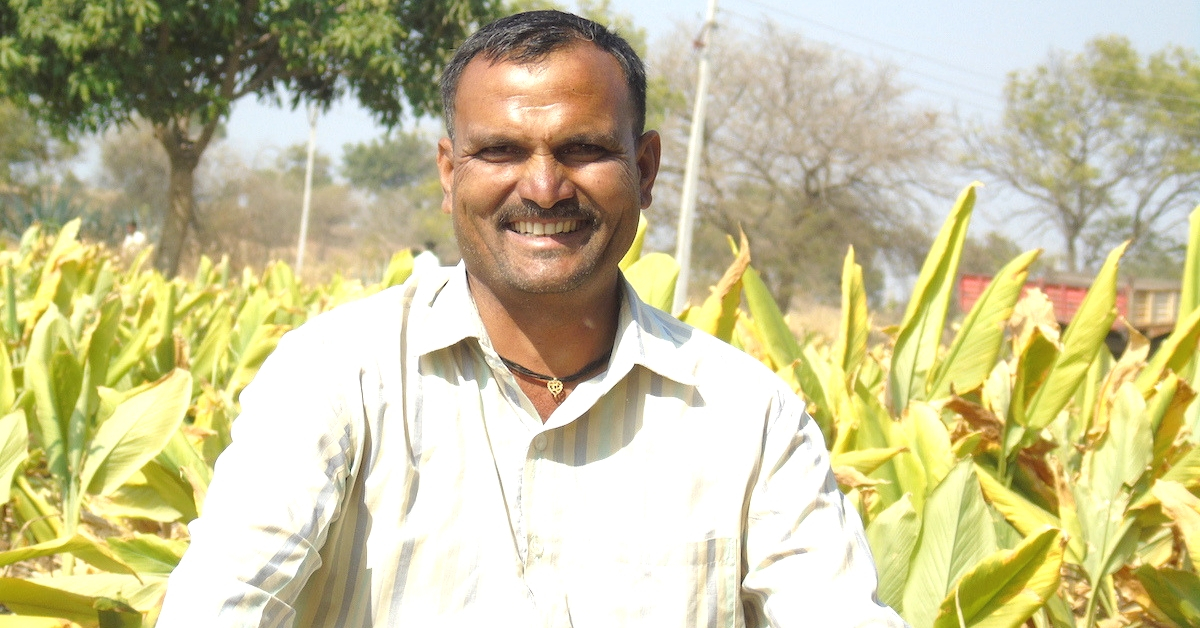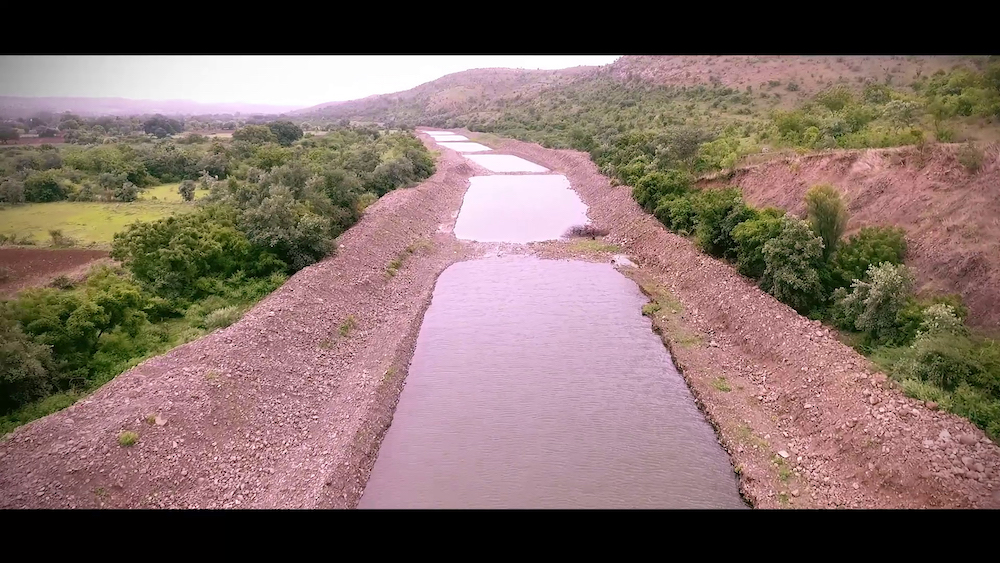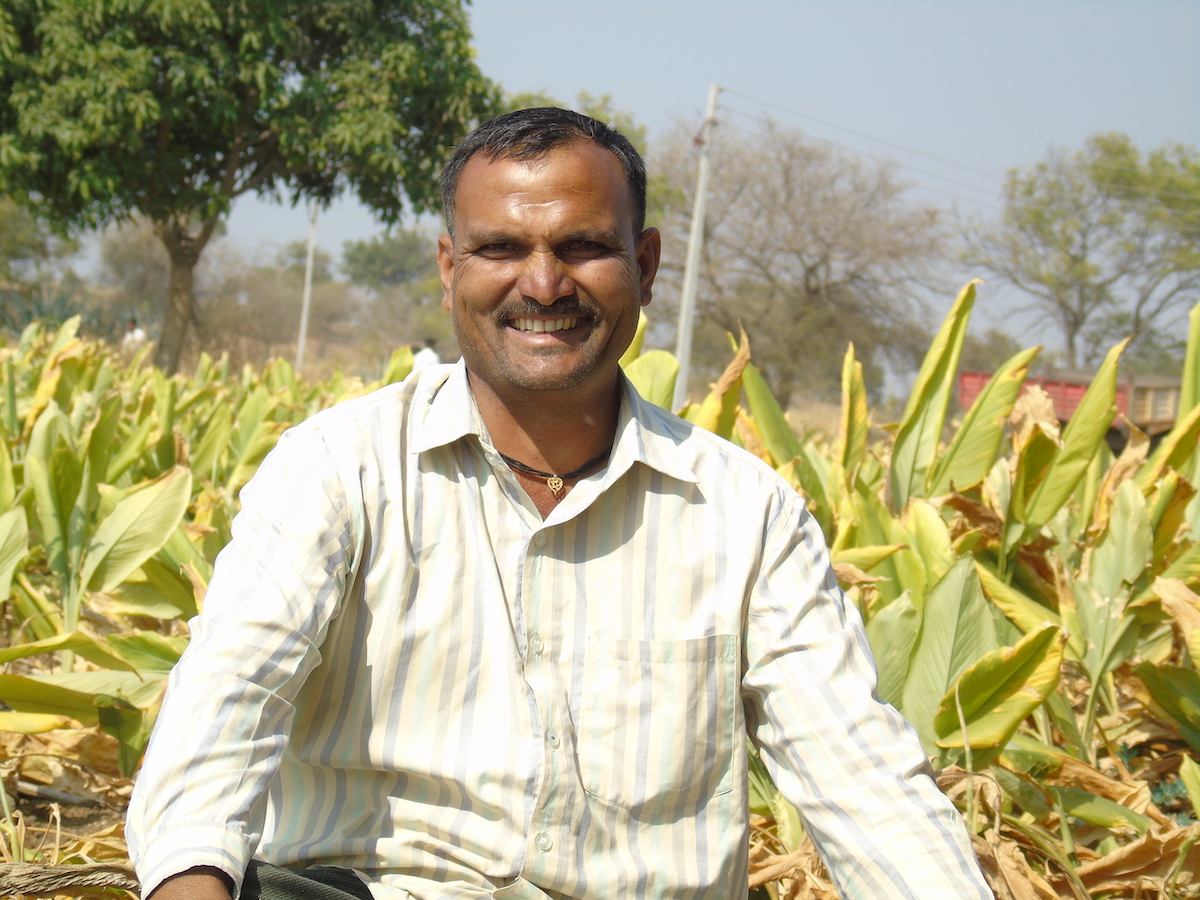Here’s How a Water Revolution is Igniting Among 15,000 Farmers in Maharashtra!
Once, farmers skipped meals during droughts. Today, L&T Financial Services is providing solutions that are keeping Beed villages green and fertile!

This article has been sponsored by L&T Financial Services.
Sambhaji Neharkar’s world lies in his village in Beed district of Maharashtra. For the farmer, life revolves around his crops, which in turn depend on nature for the water they need to grow.
But nature is not always bountiful. And when nature fails, the results can be very harsh. Back in 2014-15, the Marathwada region of Maharashtra was so parched, it was a struggle to arrange even a few litres of water for day-to-day use – never mind the tens of thousands needed to irrigate crops.
Agriculture in Beed came to a halt, and thousands of farmers lost their year’s earning in only one monsoon season. For thousands, like Sambhaji, there was no option but to cut their expenses to survive through the year- even if it meant skipping a meal every day.
Such situations also lead to hundreds of farmers migrating to other parts of the country to work as daily wage labourers in the areas of sugar cane cutting, brickwork, etc.
There was a shortage of rainfall in 2018 as well. But things were very different in Sambhaji’s village this time around. The wells did not go dry, and neither did their crops wither on their stalks.
So what brought about this dramatic ‘water revolution’?

After the disastrous drought of 2014-15, there was a general feeling that something had to change at the fundamental level. And one such change that would prove critical in the long run was the ‘Jalvaibhav’ project, launched by L&T Financial Services (LTFS).
Their aim was to bring sustainable solutions to farmers so their crops would thrive even if rainfall was scanty. The project that started four years ago worked to help over 15,000 farmers in 32 villages across Beed. It began with 12 villages initially and later expanded to another 20 by 2016-17.
Steps towards a revolution
An Integrated Water Resource Management (IWRM) system, Jalvaibhav focused on creating ex-situ (interventions are usually carried out on water streams and waste lands mainly for rain water storage and harvesting) and in-situ (interventions are carried in and around the farm to conserve rain water which aims to maintain the moistures for crop growths) watershed structures.
Along with NGO partners Manavlok and Dilasa Pratishthan, LTFS’s Corporate Social Responsibility (CSR) team visited villages to understand what exactly their needs were and how they wanted them to be addressed.
Foremost among the concerns was the desire of farmers to find a way for irrigation without actually losing their lands.
To address such concerns, a participatory approach was followed to identify the needs of the community, and the available resources to fulfil them. It also helped to have community ownership which leads to the sustainability of project activities.
So what was actually done?

Speaking to The Better India, Sameer, the Project Manager of Manavlok said, “An important aim of the project was to stop the erosion of the fertile soil and to maintain soil moisture that helps in crop growth with less water required from external sources,”
With that focus, LTFS has undertaken interventions like compartment bunding and silt application. It has also created watershed structures like ‘Deep Continuous Contour Trenches’, ‘Loose Bolder Structures’, ‘Gabion’ and ‘Dohas’. It has also undertaken desilting at ridges and valleys, along with in wastelands.
A ‘Doha’ is a water storage and harvesting structure created on a water stream without acquiring the land from the farmers. The structure involves a lower cost and is very useful to harvest rainwater. It also makes water available for crops during dry spells and can accumulate and harvest up to one crore litres of rainwater.
“Beed has hilly as well as plain terrains. Both terrains experience large magnitudes of soil erosion. This leads to less water availability and fertile soil for agriculture. Less rainfall and more soil erosion together became the biggest crisis for farmers here,” Sameer added.
However, Jalvaibhav tried to change this situation by implementing irrigation techniques in the villages so water can be percolated for future use.
“During rainfall, water gets harvested and percolated and flows into wells and borewells increasing the water table,” says Ankush Adsul, the technical officer of NGO partner Dilasa Sanstha.
Joining hands with the farmers
Since LTFS began a dialogue with farmers before starting these projects, it brought the villagers closer to Jalvaibhav, ensuring their involvement in the process. Their ‘More Crop Per Drop’ concept weaved the traditional knowledge of farmers along with innovative techniques of irrigation to bring suitable results on the fields.
Under the project, LTFS also encouraged farmers to change the varieties of seeds in their fields. They have installed water tanks in the village for cattle too. One person is assigned to take care of the tank, and domestic animals of several farmers use the sustainable tanks.
In addition to this, LTFS linked their IWRM programme with the 13th Sustainable Development Goal that focuses on taking urgent action to combat climate change and its impact.
Through IWRM, LTFS tried to bring business to rural communities while helping save the environment. In order to build climate resilient communities in Beed, they trained residents to detect early warnings of drought and to monitor them.
When they detect an onset, people are also trained to design contingency plans for drought-proofing of crops and integrated watershed management. This way, farmers could be well-equipped to maintain their livelihoods without huge losses, even though they have no control over the climate.
A happy result for all, year-on-year

And through the years, these combined efforts have been yielding great results too.
Speaking to TBI, Sambhaji said, “This year, we didn’t have much rainfall. But even then, the cotton crops are flourishing. In normal circumstances, we would have chopped it down because it wouldn’t have given any yield anyway. But because of LTFS’ intervention and the new variety of cotton they suggested, I am looking at an amazing harvest. I have been working alongside LTFS and helping farmers understand their work in Beed. And we are pleased to see the increase in ground water level as well as the increase in productivity.”
Another farmer, Jayraj Munde, reflects Sambhaji’s experience with the change in water tables. Munde owns two acres of land and he grows cotton on half of it. The other half has depleted fertility mostly due to decreasing groundwater levels.
LTFS helped him by desilting the earth and giving the desilted soil to Munde and farmers like him whose lands were infertile. Munde had to bear the transportation cost, but he believes his investment was certainly worth it because his land is slowly becoming fertile.
The desilting has also increased water levels in the wells surrounding his farm, thus empowering him to water his cotton crops.
So overall, farmers don’t have to rely on water tankers as much since their farms are self-sufficient, water-levels are rising and infertility rates of the lands are declining — the three concerns that were affecting villagers the most.
Thanks to this project, there has been an increase in the annual household incomes of the beneficiaries along with an increase in water storage created by water structures. Jalvaibhav has shown how united efforts can help resolve the complicated issues of irrigation, crop yield and migration in one go. And the impact created in Beed can be an example for many regions of the country on how to change conditions for good.
(Edited by Vinayak Hegde)
Like this story? Or have something to share? Write to us: [email protected], or connect with us on Facebook and Twitter.
This story made me
- 97
- 121
- 89
- 167
Tell Us More
We bring stories straight from the heart of India, to inspire millions and create a wave of impact. Our positive movement is growing bigger everyday, and we would love for you to join it.
Please contribute whatever you can, every little penny helps our team in bringing you more stories that support dreams and spread hope.



















